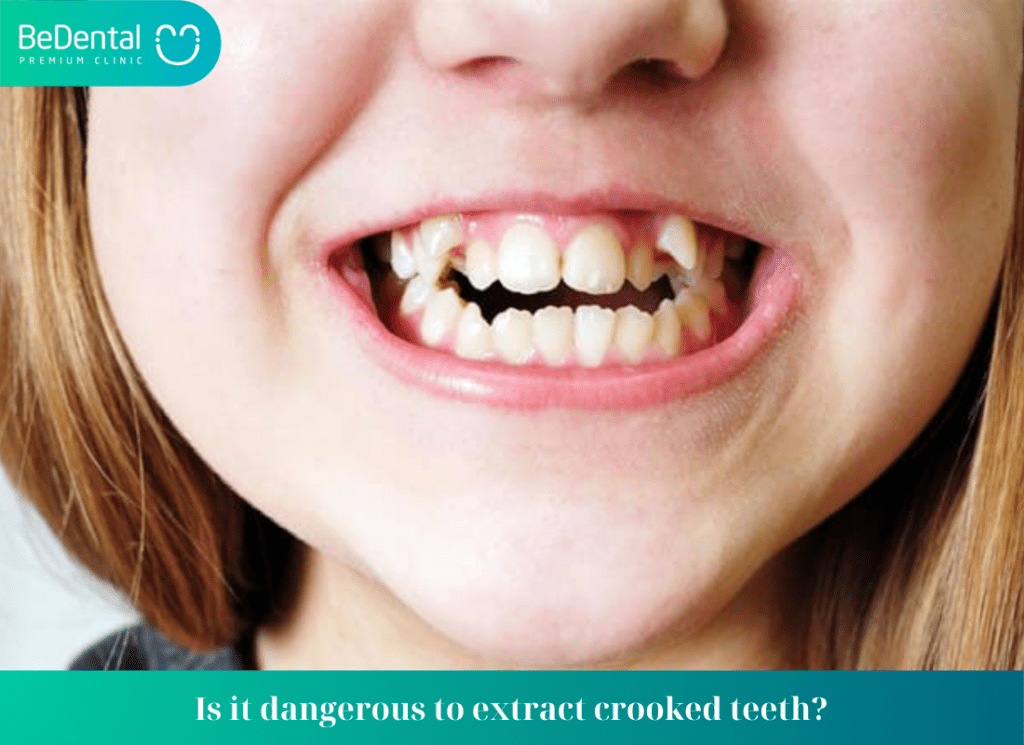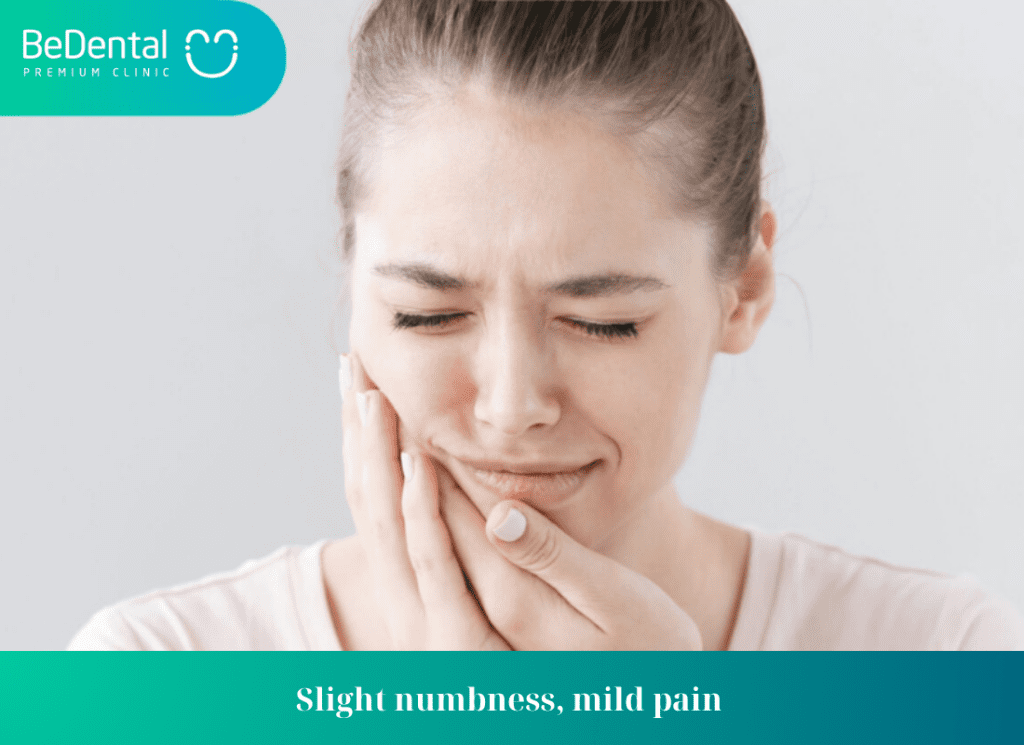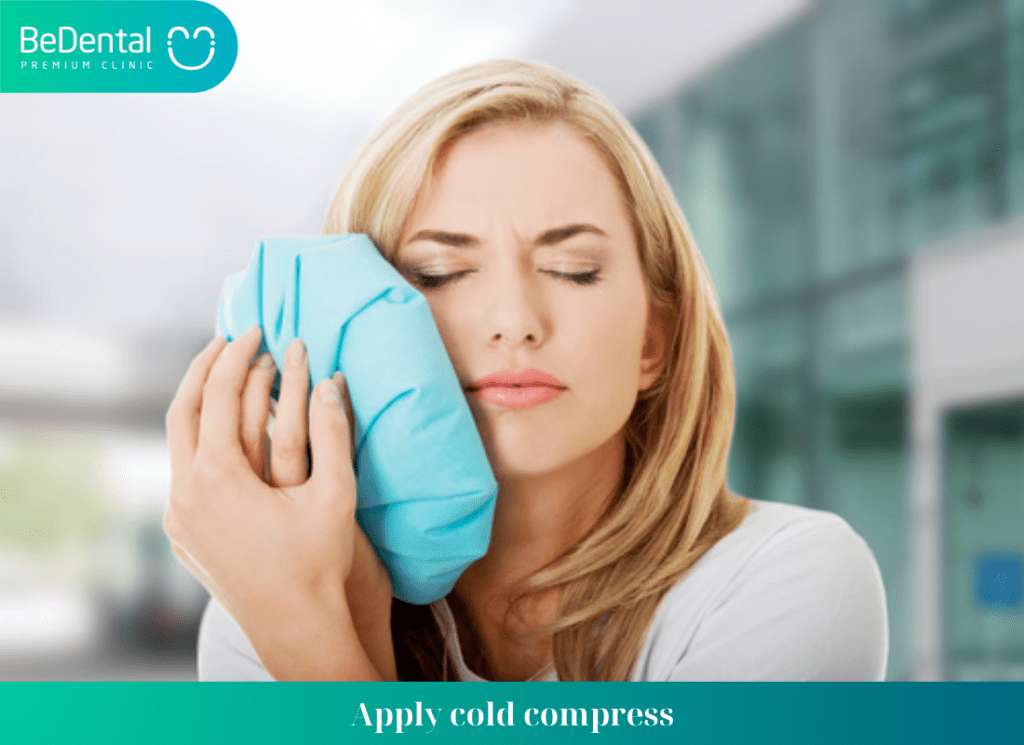Crooked teeth belong to the canine tooth group, but what makes them unique is that they do not align with the other teeth and protrude forward. This creates a gap with the adjacent tooth. Food particles often get trapped in this gap. So Should crooked teeth be extracted? What is the Post-Extraction Care for Crooked Teeth? This can lead to oral diseases such as gingivitis and periodontitis, among others.
1) Is it dangerous to extract crooked teeth? Should crooked teeth be extracted?
From a structural perspective, crooked teeth are essentially misaligned teeth that grow out of the dental arch, so they do not fit evenly and are not aligned like other teeth. From a medical standpoint, Should crooked teeth be extracted? Crooked teeth are not considered beneficial for several reasons
- Food easily gets stuck between the crooked tooth and the adjacent teeth due to the uneven spacing, which allows bacteria to invade and attack the spaces between teeth, leading to oral diseases.
See more: What are crooked front teeth

Crooked tooth extraction is a dental surgical procedure and carries certain risks. However, when performed by a skilled and qualified dentist, the procedure is generally safe and not dangerous. Below are some risks that may occur during the extraction of crooked teeth:
- Infection: Infection is a common risk after the extraction of crooked teeth. However, the dentist will follow strict sterilization protocols and disinfect the wound with antibiotics according to dental hygiene recommendations to minimize the risk of infection.
- Bleeding: Bleeding may occur after crooked tooth extraction. The dentist will apply measures to stop the bleeding and provide you with advice on post-extraction care and recovery.
- Soft tissue injury: During crooked tooth extraction, there may be damage to the surrounding soft tissues, including the skin, cartilage, and bone tissues. However, with precise techniques and careful handling by the dentist, soft tissue damage can be minimized.
- Risks related to anesthesia: When using anesthesia during crooked tooth extraction, there are some risks such as allergic reactions or effects on the central nervous system, such as headaches or cardiovascular issues. However, the dentist will evaluate and choose the best anesthetic option for you.
It is also more challenging to clean the teeth because crooked teeth are not aligned evenly, making it difficult to brush away plaque, bacteria, and food particles, which can lead to problems in your daily life. Should crooked teeth be extracted to improve oral hygiene?
Crooked teeth are misaligned with the bite and do not grow straight, so chewing and biting functions are not optimal. This can easily lead to trauma from collisions or tooth enamel wear due to habits like teeth grinding.
However, if you have a crooked tooth, you do not need to worry too much about whether Should crooked teeth be extracted or if it is dangerous. You should visit reputable dental centers, where experts can help you achieve straight teeth in the shortest time!
However, if you have a crooked tooth, you do not need to worry too much about whether it should be extracted or if it is dangerous. You should visit reputable dental centers, where experts can help you achieve straight teeth in the shortest time!
See more: What are crooked front teeth?
2) Is it dangerous and painful to extract crooked teeth?
Tooth extraction is a relatively simple and common procedure in dentistry. But since teeth are part of the body, any intervention to remove them will cause some level of discomfort. Additionally, there have been cases of complications during and after extractions, such as gum bleeding and tooth infections, which can affect health and daily activities.So Should crooked teeth be extracted despite these risks?
Crooked tooth extraction is a complex surgical procedure like any other dental surgery and carries some potential risks. However, when performed by a professional and experienced dentist, the procedure is generally safe and effective. Should crooked teeth be extracted to prevent further complications?
Risks:
- The most common risk after crooked tooth extraction is bleeding. To reduce this risk, the dentist will follow strict hygiene protocols and may use treatments such as stitching the wound and providing non-antibiotic treatment.
- Other risks include excessive pain, damage to nearby soft tissues, and partial tooth breakage. These risks may occur during crooked tooth extraction.
Pain:
-
Usually, crooked tooth extraction is performed under local anesthesia, so you will likely not feel pain during the procedure. However, after the anesthesia wears off, you may experience mild pain and swelling for a few days following the extraction. Should crooked teeth be extracted if the pain is manageable?

- However, after the anesthesia wears off, you may experience mild pain and swelling for a few days following the extraction. Pain and swelling can be managed with pain relievers prescribed by the dentist and cold compresses.
It is important to consult with your dentist to learn more about your specific case and discuss the risks and benefits of crooked tooth extraction. The dentist will provide detailed information and suggest solutions to ensure that the extraction process is quick and as painless as possible.
Because of this, many people still wonder whether extracting crooked teeth is dangerous and if there are any risks. However, there’s no need to worry, as with today’s advanced technology and techniques, any discomfort will be minimized, and you will be kept completely safe.
3) Crooked Tooth Extraction Procedure
Crooked tooth extraction (also known as crooked canine extraction) is a more complex process compared to regular tooth extraction because the crooked tooth is often embedded in the bone, making it more difficult to remove. The typical crooked tooth extraction process includes the following steps:
- Evaluation and Diagnosis: The dentist will conduct a comprehensive assessment of the crooked tooth, including its position in relation to the rest of your teeth, using X-rays or CT scans. This helps the dentist accurately diagnose the shape and size of the crooked tooth.
- Preparation Before Extraction: Before the procedure, the dentist may provide anti-inflammatory cream or a soft tissue soothing solution to help reduce inflammation and slow tooth movement.
- Anesthesia: The dentist will use local or general anesthesia to ensure that you do not experience pain or discomfort during the procedure.
- Incision and Bone Removal: The dentist will make an incision to access the crooked tooth. They will then use specialized tools to widen the incision and access the bone, which may be covering the crooked tooth.

- Tooth Separation and Removal: After the bone covering the crooked tooth is removed, the dentist will use specialized tools to extract the tooth. This may require gentle pulling or a twisting technique to separate the tooth from its surrounding structure.
- Closing the Incision and Stitching: Once the crooked tooth is removed, the dentist will close the incision to ensure complete sterility. This helps the wound heal quickly and reduces the risk of infection.
- Post-Extraction Care Instructions: The dentist will provide specific post-extraction care instructions, such as how to care for the wound, the use of painkillers, and cold compresses to reduce swelling and inflammation.
The process of extracting a crooked tooth takes longer than a regular extraction, and the time required will vary depending on your specific condition. Should crooked teeth be extracted to enhance dental alignment?
4) Are there any issues with extracting crooked teeth?
Crooked teeth do not affect the function of chewing, so extracting a crooked tooth generally does not impact the rest of the dental arch.
In fact, crooked tooth extraction is only a minor surgical procedure and is not overly complicated. This method does not pose any danger to your health.
The process of extracting crooked teeth is a dental surgical procedure that brings high benefits for oral health and helps create a more aligned and harmonious set of teeth. However, Should crooked teeth be extracted for long-term benefits? Here are some benefits of crooked tooth extraction:
- Improved crooked tooth condition: Extracting crooked teeth helps adjust the position and size of the teeth to create a more aligned smile. This improves both the appearance and function of your teeth.
- Increased cleaning efficiency: Straight and evenly spaced teeth are easier to clean, helping to prevent cavities and gum inflammation.
- Reduced risk of dental issues: Crooked teeth can cause many dental problems, including open bite and pain when chewing due to underdeveloped jawbones, leading to gum inflammation and mouth infections. Extracting crooked teeth helps reduce the likelihood of these problems.
- Improved dental alignment and breathing: Extracting crooked teeth helps balance the upper and lower jaws, making it easier to chew and speak. Additionally, extraction can improve respiratory health, especially for those with breathing problems, such as the elderly or those with a backward-tilting jaw.
Today’s tooth extraction techniques are supported by modern ultrasonic technology, ensuring that all procedures performed by the dentist are carefully and accurately controlled to minimize bleeding and reduce pain for the patient.
Along with the use of local anesthesia, there will be no pain during the tooth extraction process.
In just 15–30 minutes, the dentist can efficiently remove the crooked tooth without deep invasion or creating a large incision.
See more: Are porcelain veneers necessary?
However, to ensure maximum safety, it is recommended to choose reputable medical facilities for crooked tooth extraction.
5) Post-Extraction Care for Crooked Teeth
After extracting a crooked tooth, there are a few important guidelines you should follow to promote recovery and healing:
- Apply cold compresses: Swelling and pain are common after crooked tooth extraction. Applying a cold compress to the affected area for the first 24–48 hours will help reduce swelling and pain. Use a cold pack wrapped in a soft towel and apply it to the swollen area.

- Rest and limit physical activity: Resting is the most effective way to help your body recover after tooth extraction. Avoid heavy physical activities, and refrain from chewing or eating hard foods to prevent injury and further swelling.
- Stay hydrated and eat soft foods: In the first few days after extraction, avoid hot and spicy foods that could cause pain or irritation. Instead, focus on staying hydrated and consuming soft foods like soups, smoothies, vegetable broth, or mashed foods.
- Use a cotton pad to prevent bleeding: The dentist will place a cotton pad in the extraction area to prevent infection. Follow the dentist’s instructions and avoid rubbing the extraction site to prevent injury or excessive bleeding.
- Rinse your mouth gently: Rinse your mouth with warm salt water after meals or at least twice a day to ensure oral hygiene. Be sure not to use antiseptic solutions or open your mouth wide while rinsing to avoid injuring the extraction area.
- Attend follow-up appointments: The dentist will schedule follow-up appointments to monitor recovery and identify any potential issues. Keep these appointments and inform the dentist if you notice any unusual symptoms or problems.
See more: Ht-smile excellent advancement
- Follow medication instructions: The dentist may prescribe pain relievers or anti-inflammatory drugs to reduce pain and swelling. Take the medication as directed, and do not adjust the dosage without the dentist’s approval.
- Avoid touching the extraction area: Do not use your tongue or hands to touch the extraction area to prevent tearing the incision or causing bleeding.
- Stick to soft foods: Eating soft or liquid foods will help prevent damage to the incision.
- Pain after anesthesia wears off: Once the anesthesia wears off, you may feel slight pain and soreness. These symptoms will gradually subside with the use of pain relievers prescribed by the dentist. Avoid purchasing over-the-counter medication without your dentist’s approval.
- Oral hygiene: Use a soft-bristled toothbrush of good quality to avoid irritating the extraction area, which can slow the healing process

-
Regular dental check-ups at reputable dental facilities should be done every 6 months to check for any abnormalities after wisdom teeth removal as well as to assess overall oral health status. Should crooked teeth be extracted for a better dental experience?
Tư vấn chuyên môn bài viết:
BÁC SĨ DƯƠNG THỊ THÙY NGA
BEDENTAL - TOP STANDARD DENTISTRY SYSTEM
In HANOI
Address 1: 7B Thi Sach St, Ngo Thi Nham, Hai Ba Trung Dist, Ha Noi. - 0934.61.9090
Address 2: No 129 Hoang Ngan, Yen Hoa, Cau Giay Dist, Ha Noi. - 0934.61.9090
In HO CHI MINH
Address 1: 53 -55 -57 Pho Duc Chinh St, Nguyen Thai Binh, Dist. 1, Ho Chi Minh. - 0766.00.8080
Working: 9am - 8pm everyday
Website: https://bedental.vn/en/





